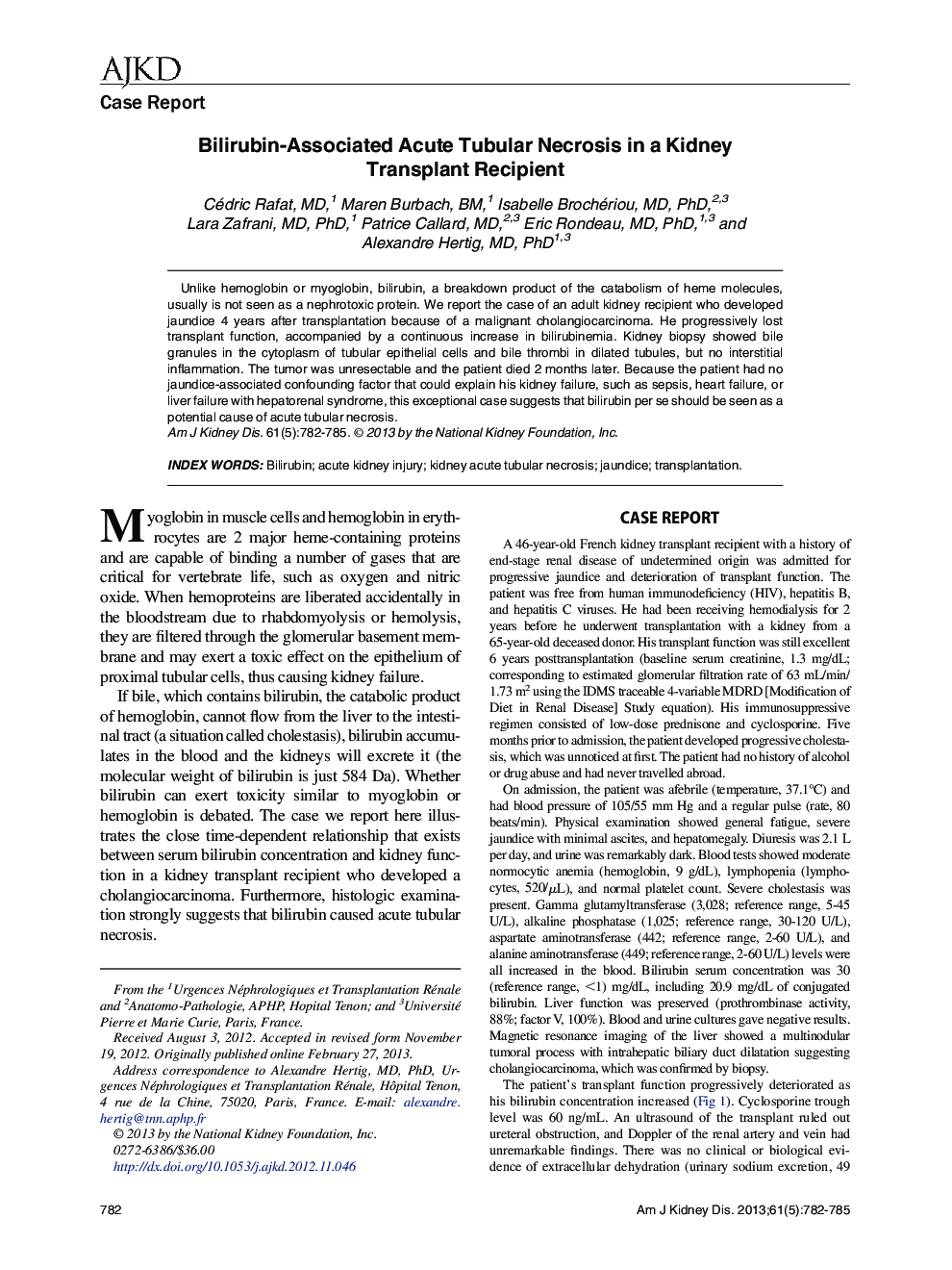| Article ID | Journal | Published Year | Pages | File Type |
|---|---|---|---|---|
| 3848457 | American Journal of Kidney Diseases | 2013 | 4 Pages |
Abstract
Unlike hemoglobin or myoglobin, bilirubin, a breakdown product of the catabolism of heme molecules, usually is not seen as a nephrotoxic protein. We report the case of an adult kidney recipient who developed jaundice 4 years after transplantation because of a malignant cholangiocarcinoma. He progressively lost transplant function, accompanied by a continuous increase in bilirubinemia. Kidney biopsy showed bile granules in the cytoplasm of tubular epithelial cells and bile thrombi in dilated tubules, but no interstitial inflammation. The tumor was unresectable and the patient died 2 months later. Because the patient had no jaundice-associated confounding factor that could explain his kidney failure, such as sepsis, heart failure, or liver failure with hepatorenal syndrome, this exceptional case suggests that bilirubin per se should be seen as a potential cause of acute tubular necrosis.
Related Topics
Health Sciences
Medicine and Dentistry
Nephrology
Authors
Cédric MD, Maren BM, Isabelle MD, PhD, Lara MD, PhD, Patrice MD, Eric MD, PhD, Alexandre MD, PhD,
